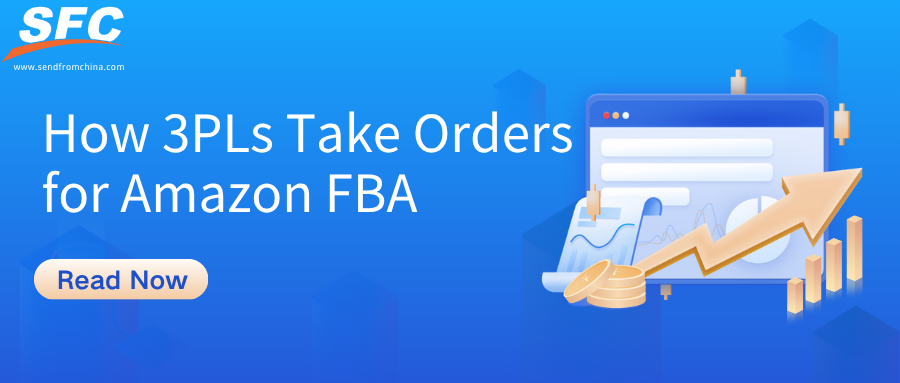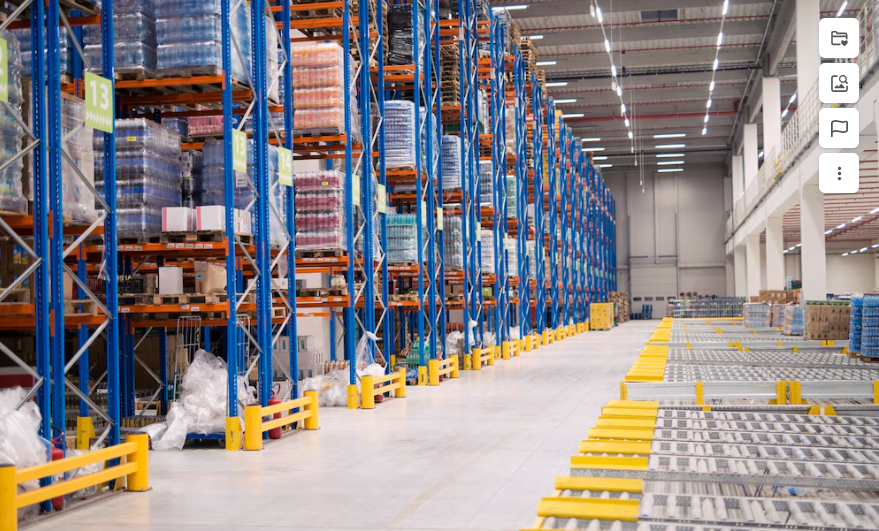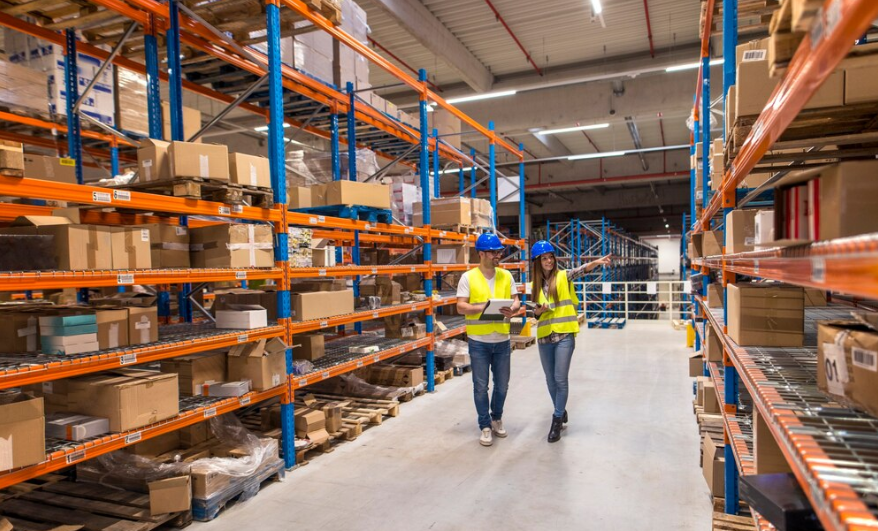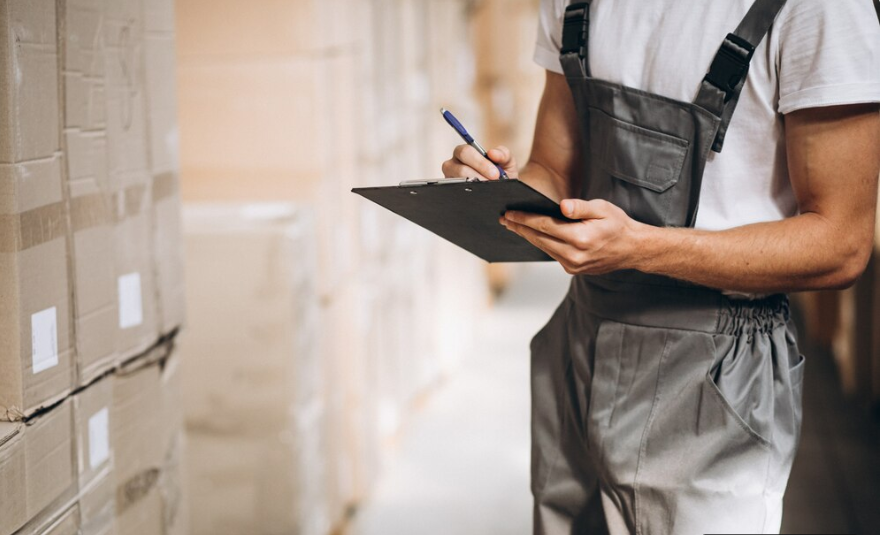Table of Contents
Get Custom eCommerce Fulfillment Service
Book a Meeting
How 3PLs Take Orders for Amazon FBA: Best 3PL Solutions for Sellers
Time: Oct 22,2025 Author: SFC Source: www.sendfromchina.com
The logistics landscape for Amazon sellers has never been more complex—or more critical. As Amazon's Fulfillment by Amazon (FBA) program continues to evolve, bringing with it new restrictions, fee structures, and inventory limits, the smart seller is looking beyond a single solution. They are seeking strategic partners who can act as the vital bridge between the factory floor in Asia and Amazon’s immense, demanding fulfillment network.

This is where the Third-Party Logistics provider, or 3PL, steps in, not just as a service, but as a crucial pillar of an e-commerce operation. For Amazon sellers, particularly those sourcing from China, the right 3PL is the difference between consistent profitability and the headaches of inventory mismanagement and compliance fines.
This guide, written by professionals who live and breathe China-to-FBA logistics, cuts through the jargon to show you exactly how 3PLs take and process orders for Amazon FBA, why this partnership is non-negotiable for scaling, and how to choose the right partner—like the experts at SendFromChina—to secure your supply chain.
1. What exactly is a 3PL (Third-Party Logistics) and how it fits Amazon FBA
A “3PL” or third-party logistics provider is a company that offers outsourced logistics services: warehousing, transportation, inventory management, picking/packing, shipping, returns and more. For Amazon sellers, a 3PL can operate alongside—or in support of—Amazon’s own fulfilment offering (Fulfillment by Amazon or “FBA”) or in lieu of it.
For example, Amazon describes that working with a 3PL can eliminate the need for a company to invest in expensive infrastructure—warehouse space, software systems, transport assets—because the 3PL already has that. Moreover, many 3PLs are purpose-designed to support sellers that ship from manufacturing hubs (such as China) into Amazon’s network. They manage the “middle mile” from origin through to inbound to Amazon or even direct to multi-channel fulfilment.Key distinctions
With Amazon FBA you send inventory directly to Amazon warehouses; Amazon handles storage, picking, packing, shipping to end-customers.
With a 3PL you outsource your logistics partner but you retain more control: you choose where you store inventory, shipping lanes, value-added services (e.g., kitting, bundling) and often handle multi-channel (not only Amazon) fulfilment.
In many cases, a 3PL will integrate with your Amazon Seller Central account (or sale channels) and then either ship inventory into Amazon (for FBA replenishment) or ship directly to customers (or other channels). More on this below.
2. How 3PLs take orders for Amazon FBA: the process, step by step
Understanding the workflow is critical if you are working from China (or anywhere) and your partner 3PL is handling orders for Amazon. From initial inventory receipt to final “inbound → Amazon” or “direct-to-customer” shipping, here’s how the sequence typically plays out.

Step 1: Inventory inbound to 3PL
You manufacture (in China) or procure goods, ship them to the 3PL’s warehouse. The 3PL receives the goods, counts and inspects them, updates their Warehouse Management System (WMS) to reflect inventory received.
Once stock is in hand, the 3PL confirms the SKU counts, storage location and updates the seller. This is essential so that the inventory appears “available” in your system (and Amazon’s when you plan an FBA shipment).
Step 2: System integration and order/fulfilment triggers
A major advantage of a quality 3PL is that their WMS integrates with Amazon Seller Central (and possibly other platforms) so that inventory levels, shipment plans and order flows are synchronised. For example:
A 3PL will connect their WMS to your Amazon Seller Central account, enabling automatic data flow (orders, shipment requests, inventory updates).
When you create an FBA inbound plan in Amazon, that plan may feed directly into the 3PL’s system. The 3PL receives the “you need to send these SKUs, this quantity” request.
This integration removes manual spreadsheets, email ping-pong and reduces errors. Good 3PLs emphasise this automation.
Step 3: Pick, pack and prepare for Amazon inbound
Once the shipment plan is confirmed, the 3PL will pick the identified SKUs in their warehouse, pack them according to Amazon’s requirements (labels, carton sizes, bundles) and prepare them for shipment either to Amazon’s fulfillment centres or to end-customers (in case of FBM or multi-channel). If the 3PL is prepping for Amazon inbound, they will adhere strictly to Amazon’s packaging and labelling guidelines (e.g., FNSKU labels, carton labels, weight/size limits).Step 4: Shipping from 3PL to Amazon (or customer)
At this stage the goods move out of the 3PL’s warehouse. If sending to Amazon:
The 3PL arranges freight or parcel shipping to the assigned Amazon fulfilment centre(s) as per the inbound plan.
Inventory is now in transit; the 3PL updates tracking and communicates with the seller. If shipping direct to customer (via FBM or multi-channel):The 3PL selects appropriate carrier, prints shipping labels, tracks shipment, and sends out. This allows sellers to tap into scalable logistics without handling every shipping detail themselves.
Step 5: Inventory reconciliation, returns and after-care
After goods arrive (at Amazon or customer), a quality 3PL supports the reconciliation process: checking that received counts match expected counts, flagging discrepancies, managing returns or re-stocking when needed. As one source puts it: “The 3PL also handles returns, ensuring that returned items are inspected, restocked, or disposed of properly.” Additionally, many 3PLs provide visibility dashboards: inventory levels, shipping status, return metrics, SKU performance.Step 6: Scaling and continuous optimisation
Once the primary workflow is running, strong 3PLs help sellers optimise across seasonality, SKU expansion, new markets, cost management. They bring logistics expertise, warehouse location strategy, freight optimisation and value-added services (kitting, bundling, custom packaging) to unlock growth.
3. Why Amazon sellers use 3PLs (and when it makes sense)
There are many reasons to partner with a 3PL when you sell on Amazon—and equally many reasons to review whether you’re using the right model. Here are the main benefits and typical triggers:

Benefits of using a 3PL
Cost efficiency & infrastructure leverage: A 3PL means you don’t build your own warehouse, hire large staff, or invest in systems. According to Amazon’s guide: using a 3PL can reduce overhead, warehouse cost and shipping cost.
Scalability & flexibility: You can scale up/down depending on season, product range or geographic markets, without tying up capital in fixed assets.
Multi-channel support: Many 3PLs support fulfilment beyond Amazon (own website, other marketplaces), so you’re not locked into Amazon’s ecosystem.
Value-added services: Kitting, bundling, custom packaging, special handling (oversized/heavy SKUs) are often better handled by specialist 3PLs. Amazon’s own offering may not cover all.
Better control and visibility: With system integrations, you can monitor inventory, shipping, returns and performance rather than being entirely dependent on Amazon’s internal operations.
When it makes sense / typical triggers
You might consider engaging a 3PL if any of the following apply:
You’re shipping from manufacturing in China (or abroad) and need a logistics partner to consolidate, prep & send into Amazon.
You are hitting an inflection point in order volume or storage space where Amazon’s base model is either too costly or too restrictive.
You have multi-channel business (Amazon + own website + other marketplaces) and want unified fulfilment.
You sell heavy/oversized items, or products with special packaging needs that don’t fit easily into Amazon’s standard model.
You want to reduce long-term storage fees, or want more control over inventory and shipping lanes than Amazon alone allows.
On the flip side: if you are a very small seller, low SKUs, low volume and satisfied with Amazon’s ecosystem, FBA alone might suffice.
4. How to choose the best 3PL for Amazon sellers (criteria & checklist)
Not all 3PLs are created equal—especially when you are focusing on Amazon FBA workflows, or shipping from China into Amazon. Here’s a checklist of criteria to evaluate and questions to ask.

Integration with Amazon Seller Central and systems
Does the 3PL’s WMS integrate with Amazon API or import Amazon inbound plans directly? As noted: “connect their WMS to your Amazon Seller Central account … Orders and shipment requests … pulled into their system automatically”.
Do they support FBA prep, labelling, and documentation needed for Amazon inbound shipments?
Are they capable of multi-channel orders, not just Amazon?
Can you access real-time dashboards: inventory, shipping status, returns?
Amazon-specific expertise and compliance
Are they familiar with Amazon’s packaging/label guidelines, inbound plan rules, restrictions (hazardous items, oversize, weight etc)?
Do they offer FBA-prep services tailored to Amazon’s requirements (labeling, bundling, packing, quality inspection)?
Do they understand Amazon’s performance metrics (shipment accuracy, on-time delivery, SKU health) and support compliance?
Location and network (especially if shipping from China)
If manufacturing in China, do they have inbound facilities (in China, Hong Kong) to consolidate goods, perform QC, and forward to Amazon (or their fulfilment centre)?
If fulfilment in the U.S./Europe/Australia, do they have warehouses strategically located for Amazon’s receiving network (to minimise transit cost & time)?
Can they handle international freight, customs, duties, labeling for Amazon inbound shipments?
Cost structure and transparency
Are their fees clearly laid out (receiving, storage, pick/pack, outbound shipping, returns)? Amazon’s 3PL pricing guide shows that inbound shipping, storage, handling, outbound shipping and post-care are key cost components.
Do they provide cost-savings insights (e.g., consolidating shipments, reducing storage time, selecting optimal carrier)?
Are there hidden fees (long-term storage, minimums, extra handling)?
Performance and reliability
Order accuracy: picking/packing errors must be low. For Amazon sellers this is critical. (Example: 99.95 % accuracy was noted in one 3PL review)
On-time shipping / fulfilment speed.
Capacity to handle surges (holiday peaks, promotional events) without dropping service levels.
Good customer service and responsiveness.
Value-added services
Kitting/bundling, promotional inserts, custom packaging, labelling, returns processing. These can add competitive advantage.
Multi-channel support (your website, other marketplaces).
Analytics, inventory forecasting, stock-positioning (closer to customers).
Flexibility (no long-term lock-in, ability to adjust as you grow).
Cultural fit and communication
Especially if you are based in China and shipping to global markets:
Clear communication channels, same time-zone or overlapping working hours, bilingual (if applicable) support.
Transparent reporting (you see what is happening rather than being left in the dark).
Proven references or case-studies of Amazon sellers in your region/country.
5. How SendFromChina (your China-based 3PL) works with Amazon FBA sellers
At SendFromChina (based in China), our service is tailored for Amazon sellers who source from China (or Asia) and aim to sell via Amazon FBA (or multi-channel). Here’s how we structure our offering and how we work.
Our value proposition
China-based sourcing support: Because we are located in China, we’re in the same time zone (with local language and logistics network), which means faster response on sourcing, inspection, consolidation.
Inbound to Amazon-compliant prep: We receive goods from your factory/supplier, check quantity & quality, apply barcodes/labels, re-package/bundle if needed, and then arrange shipping to Amazon FBA centres (US/EU) or to your chosen fulfilment channel.
Full logistics chain: From China factory → consolidation → shipment (air/ocean) → customs clearance → delivery to Amazon or local warehouse. Our network is optimized to reduce lead-time and freight cost.
Multi-channel capabilities: While many sellers focus just on Amazon, we provide support if you sell on Amazon and your own store. We can hold buffer stock in China or move goods to regional hubs as required.
Transparent cost and portal: We provide you with a dashboard showing inventory status, shipment status, costs incurred, inbound/outbound flows.
Compliance risk management: With flexible labour for labelling and handling, we ensure your pallets/cartons meet Amazon’s specs, reducing chargebacks and delays.
Sample workflow when we work with you
You source from a factory in China: you share the PO with us.
We coordinate the factory forwarder to send goods to our China warehouse (or we receive directly if you prefer).
At receipt, we perform quality check (optional), verify quantities, store in our warehouse if needed.
We perform prep per Amazon rules: e.g., remove previous labels, apply FNSKU labels, poly-bagging, bundling, re-boxing, custom inserts, place onto pallets per Amazon inbound load specs.
We help you create the Amazon inbound shipment plan (or we advise you if you prefer you do it). We ensure pallet labels, box labels, shipping documentation are correct.
We book the freight (ocean/LCL, full-container, or airfreight) from China to your Amazon fulfilment centre destination (US, EU). We manage customs export clearance, shipping documentation, tracking.
We coordinate delivery into Amazon’s designated fulfilment centre, monitor the hand-off, alert you when check-in is complete, and update your inventory dashboard.
Meanwhile, we keep buffer stock and alert you when inventory drops below your threshold so you can replenish before stock-out.
If you sell on other channels (your website, other marketplaces), we can fulfil those orders from our warehouse or arrange to dispatch to third-party fulfilment centres closer to your end-market.
We provide reporting: turn-around times, inbound costs, stock-in-transit lead times, cost per unit, damage/loss rates.
6. Conclusion
Navigating the logistics of Amazon selling is not trivial. While Amazon’s FBA program provides a powerful framework — store inventory in Amazon’s fulfilment centres, let Amazon pick/pack/ship — many sellers find value in coupling FBA with a skilled 3PL partner. A third-party logistics provider helps you manage sourcing, inventory prep, multi-channel fulfilment, and scale operations without building your own warehousing/logistics infrastructure.
7. FAQs
Q1: Do I have to use a 3PL if I sell on Amazon?
No. Many smaller sellers handle warehousing and shipping themselves and then send stock into Amazon FBA. But when volume grows, complexity increases or you source overseas, a 3PL often becomes the more efficient option.Q2: Can a 3PL send inventory directly to customers, instead of to Amazon?
Yes — many 3PLs support multi-channel fulfilment (you sell on Amazon plus your website or other marketplaces) and can pick/pack/ship to customer addresses, not just Amazon. This gives you flexibility beyond FBA.Q3: How does using a 3PL impact my Amazon fees?
Using a 3PL doesn’t change Amazon’s FBA fees, storage fees, or selling fees. What it can change is your cost structure upstream (receiving, prep, freight). If you optimise well with the 3PL, you may reduce inbound cost, avoid chargebacks, reduce stranded inventory — which improves your net margin.Q4: What are common mistakes sellers make when choosing a 3PL?
Choosing purely on lowest cost and neglecting Amazon compliance/experience.Not verifying the 3PL’s inbound prep or label accuracy, leading to Amazon rejecting shipments.
Ignoring technology/integration: not having real-time visibility into inventory/shipments.
Failing to test on a small scale first.
Underestimating the importance of location/leadtimes (especially when sourcing from Asia).
Q5: How early should I involve a 3PL in my sourcing/launch plan?
As early as possible. Ideally before placing your purchase order with the factory. Integrating your 3PL at the sourcing stage (inspection, labeling requirements, packaging for Amazon) avoids costly re-work later and ensures the chain from factory → 3PL → Amazon runs smoothly. Post Views:10
Post Views:10
Copyright statement: The copyright of this article belongs to the original author. Please indicate the source for reprinting.
Previous Post
Next Post
The Ultimate WMS Requirements Guide: Selecting the Best System for Your eCommerce Business
TAGS
Hot Research
Recent News
- Third Party Logistics Definition, Process, and Advantages
- What Is Ecommerce Fulfillment? The Definition, Process, and Benefits
- Where Does Shein Ship From
- How 3PLs Take Orders for Amazon FBA: Best 3PL Solutions for Sellers
- The Ultimate WMS Requirements Guide: Selecting the Best System for Your eCommerce Business
Get Custom eCommerce Fulfillment Service
Book a Meeting
Get a Custom China Fulfillment Solution with FREE Storage for 30 Days
 Want to know about our services, fees or receive a custom quote?
Want to know about our services, fees or receive a custom quote?
 Please fill out the form on the right and we will get back to you within a business day.
Please fill out the form on the right and we will get back to you within a business day.
 The more information you provide, the better our initial response
will be.
The more information you provide, the better our initial response
will be.





 TAGS:
TAGS: